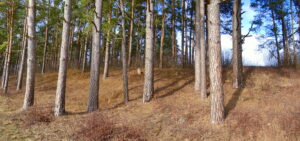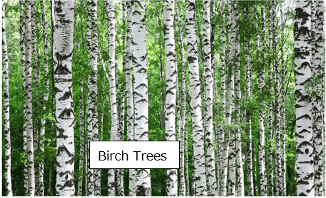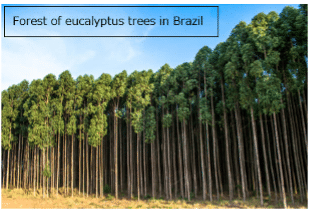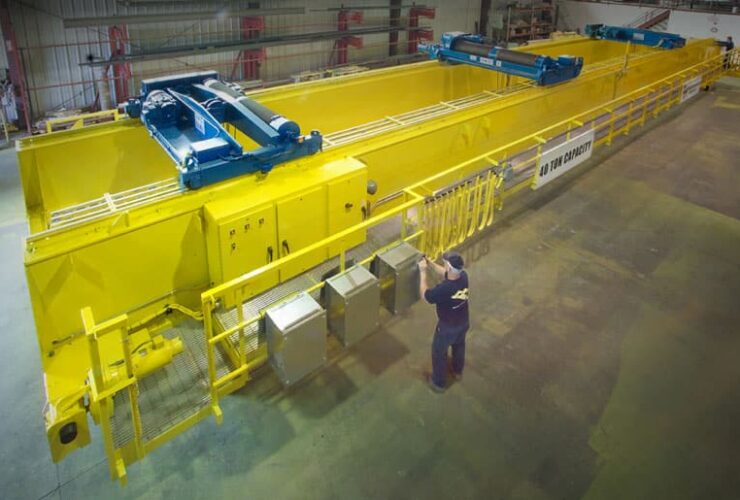This week’s post focuses on the main component of our pulp and paper industry; trees. Most in the industry think of trees as either hardwood or softwood. But as you will learn in this article, trees play a significant role in our daily lives inside and outside the Pulp & Paper Industry.
Multi-Talented Tree
An Atlanta-Journal Constitution article focused on the benefits of various tree species worldwide. We typically refer to trees in the pulp & paper business only as softwood or hardwood species. This will be useful to share with family and friends how diverse and vital trees are worldwide.
Softwood (SW)
In general, these are pines, spruces, hemlocks, redwoods, cedars, firs, etc., with a 15 to 20-year growing cycle, have long fibers that intertwine well and are typically blended as 70% SW/ 30% HW furnish to manufacture In general, softwoods are evergreens and stay green throughout the year. As a result, softwoods are easy to work with and form most of what the building industry uses, including manufacturing furniture, moldings, doors, and windows.
Hardwood (HW)
Hardwoods are ash, aspen, birch, oaks, hickory, maples, poplar, walnuts, willows, etc., with a 30 to 40-year growing cycle, characterized by short fibers and are used to provide the soft hand-feel in bath tissue. Hardwoods typically have broad leaves, produce a fruit or nut, and generally are dormant in the winter. A typical bath tissue blend at the headbox is 70% HW/ 30% SW. Floors made from Hardwoods are in heavy use as well.
Eucalyptus and Acacia (HW)
These are a specialized breed of hardwoods grown in the southern hemisphere (e.g., Australia, Africa & South America for Eucalyptus and Indonesia for Acacia.) They have a super short 5 to the 7-year growth cycle. These unique hardwoods grow from 6 to 12 ft/yr and are coveted for their blend of silky softness as hardwood but long fiber characteristics of a softwood. Several scientific efforts are underway to modify eucalyptus seeds to grow in colder climates. Since 2010, ArborGen has been field-testing its genetically engineered freeze-tolerant eucalyptus on 28 open-air sites across seven southern states, from Florida to South Carolina. “We selected eucalyptus as it has a high commercial and environmental value in terms of increased per acre productivity to support the growing global demand for sustainable wood, fiber, and energy supplies,” ArborGen spokesperson Cathy Quinn wrote. If those efforts are successful, it will quickly become the tree of choice among papermakers for strong economic reasons and its many uses in baths, towels, napkins, and printing grades worldwide. Koalas feed exclusively on eucalyptus leaves; its oil is used for cleaning, has a natural aromatic scent, functions as a natural insecticide, and is sometimes used to drain swamps and thereby reduce malaria risk.
Other industries rely heavily on trees as well.
Spices:
- The cinnamon spice comes from the bark of a small evergreen tree. It also is known to lower blood sugar. Nutmeg and mace come from the same tree. Mace is the seed cover, nutmeg is the nut, and cinnamon is the tree bark.
- Sassafras spice, called root beer fragrance, comes from the small shrubby Mitten tree.
- Other spices from trees include cloves, allspice, camphor, star anise, carob, black pepper, cardamom (ginger), and vanilla beans.
Fruits, Nuts, and Foods:
- Apples, apricots, figs, peaches, oranges, bananas, pears, persimmon, cherries, grapefruit, grapes, etc., are but a few of the many fruits from trees. Apple skin is also one of the best natural fibers to help prevent colon cancer. (An apple a day helps keep the doctor away …)
- Walnuts, almonds, chestnuts, hazelnuts, hickory, pecan, and the like are harvested for their nuts, and stains such as walnut produce colors from their shells.
- Chocolate from the cacao tree
- Chocolate substitute from pods of the carob tree
- Coffee from the coffee tree
- Chicle, used in chewing gum, from a chicle tree.
Sweeteners
Sap from Maple and Birch trees has long been used to make syrup.
Teas
Berries from the Juniper tree have been used for settling upset stomachs.
Greenhouse Gas Eater
Another equally important facet of trees is that they absorb and store vast quantities of greenhouse gases such as carbon dioxide and emit oxygen as a by-product. One mature tree gives off enough oxygen in one year for a family of four.
Medicines:
- Aspirin – Produced from the inner bark of the Willow tree, the active ingredient is salicylic acid.
- Quinine – Fights malaria and is produced from American cinchona trees.
- Taxol© – This billion-dollar blockbuster drug fights breast, ovarian, and lung cancers, coronary diseases, and even AIDS. It is produced from the Pacific Northwest yew tree.
- Another Potential Cancer Fighter – From China’s Camptotheca tree is a drug being trialed for breast, prostate, pancreas, ovarian, leukemia, lymphoma cancers, and malignant melanoma.
- Eucalyptus oil is used in cough syrups, inhalants, mouthwashes, etc.
- Witch hazel is used as an antiseptic.
- Ginko is used as an herbal supplement to improve memory.
Other Uses for Trees
- Fire Suppression Chemical – Bark from Sierra Nevada’s Sequoia tree is nearly fireproof, which lead to the discovery and use of tannic acid in fire extinguishers.
- Rubber comes from rubber trees.
- Leather is tanned from tannins derived from trees.
- Wood pellets are used as a biofuel to help coal-burning utilities receive CO2
Moreover, let us appreciate all forms of tree species within everyday products, from corrugated boxes, writing paper, bath tissue, towel, napkin products, nonwovens, and all the building products surrounding us.








